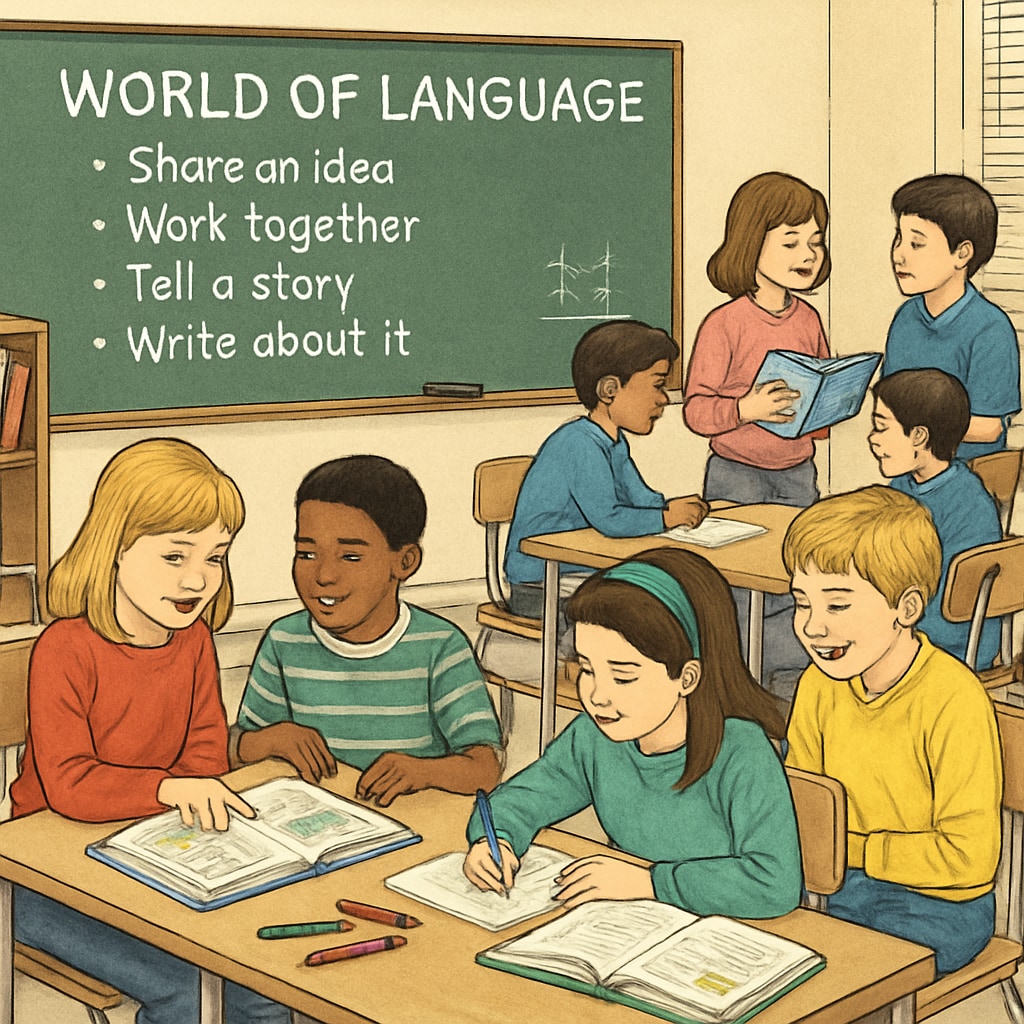“World of Language,” a cherished elementary language textbook from the 80s and 90s, holds a special place in the memories of many educators and students. Renowned for its engaging design and innovative pedagogy, this textbook stood out as a cornerstone in language education during its prime. Beyond its nostalgic charm, “World of Language” offers valuable insights into effective teaching strategies that remain relevant today. As we reflect on its impact, we also consider what modern language education might learn from its enduring success.
Why “World of Language” Was Revolutionary
In an era when many textbooks relied heavily on rote memorization, “World of Language” introduced a refreshing approach. The book emphasized interactive learning, combining storytelling, vivid illustrations, and hands-on activities to engage young learners. For example, its chapters often began with relatable narratives that seamlessly introduced new vocabulary and grammar concepts.
In addition, the textbook integrated exercises that encouraged critical thinking and creativity. Students were not just asked to complete sentences but were prompted to write their own stories, analyze texts, and engage in group discussions. This method fostered a deeper understanding of language mechanics and an appreciation for communication as a dynamic process.

The Educational Value of “World of Language”
The teaching philosophy behind “World of Language” was rooted in a whole-language approach. This method views language as an interconnected system, where reading, writing, speaking, and listening skills are developed simultaneously. By integrating these components, the textbook helped students build a comprehensive linguistic foundation.
Moreover, the book’s design appealed to diverse learning styles. Visual learners benefited from its colorful illustrations and diagrams, while auditory learners engaged with the suggested reading-aloud exercises. Kinesthetic learners thrived on the interactive tasks and role-playing activities embedded in the curriculum.
As a result, “World of Language” not only taught grammar and vocabulary but also nurtured confidence and enthusiasm for language learning. Its success lay in its ability to make education both effective and enjoyable.

Lessons for Modern Language Education
While “World of Language” is no longer in widespread use, its principles remain highly relevant. Today’s language education often leans heavily on digital tools and standardized tests, sometimes at the expense of creativity and interaction. Revisiting the methods of “World of Language” could help address these shortcomings.
- Emphasize storytelling: Stories are powerful tools for teaching language. They provide context, foster emotional connections, and make new concepts easier to grasp.
- Integrate multiple skills: Modern curricula should aim to develop reading, writing, speaking, and listening skills in tandem, as “World of Language” successfully did.
- Promote active participation: Classrooms should encourage students to engage in discussions, group projects, and creative writing rather than passively consuming information.
By combining these elements with modern technology and resources, educators can create a balanced and effective language learning environment. “World of Language” serves as a reminder that innovation in education is not solely about new tools but also about thoughtful pedagogical design.
Conclusion
The legacy of “World of Language” extends far beyond its pages. As both a tool and a philosophy, it shaped the linguistic abilities of countless students and offered a model for engaging and effective teaching. By revisiting its principles, today’s educators can draw inspiration to enrich their own practices. The enduring lessons of “World of Language” remind us that great education is timeless.
Readability guidance: This article employs short paragraphs, lists key points, and uses transitional phrases to enhance flow. The content balances historical insight with practical takeaways, ensuring relevance to contemporary readers.


